Schoenstein Updates
An Organ for Orchestrators
Consider the talented choir accompanist. Seated at the organ bench, this person fulfills all the duties of a first-class orchestrator, with the added responsibility of playing the performance! These are the accompanist-orchestrators, super-musicians of our field, sensitive and creative in preparation and performance. Our new organ for Church of the Good Shepherd in Corpus Christi, Texas was designed to give the accompanist-orchestrator all the musical resources needed to fulfill this role.
When designing an organ for the accompanist-orchestrator, tough choices must be made to fit within space and budget. Asking simple questions like, “what’s more useful to the client, an Oboe or a Larigot?” can reveal the best path forward. All voices chosen must have the largest usable playing compass, and effects are always subservient to beautiful staple ingredients (voices). For Church of the Good Shepherd, we employed our usual diapason scaling methods to ensure color variety across the whole organ. Cohesion between diapasons comes from thoughtful scale variation, careful voicing, slotting, and – new with this organ – a languid counter-bevel.
Organ builders are always battling height constraints, and flue pipes are often mitered or Haskelled to compensate. The latter method, better for strength and overall space, often leads to weak, unfocused basses. Our Head Voicer, Timothy Fink, found the remedy in studying the master of Haskelling, Estey. Following Estey’s lead, we fitted all Haskelled pipes with a bucket languid. The result is fantastic: the change to Haskelled basses is imperceptible, with plenty of rosin and singing tone all the way to low C.
Our double-enclosed Swell reeds can be used to anchor full organ or accompany a small (human) choir. Director of Music Ministries Dr. Mi Ou Lee demonstrated their flexibility by using the 32’ Contra Posaune in perfect balance as part of the string celeste ensemble. In the Choir, the 16’ English Horn – a stop usually only useful for solos in one part of its compass – is voiced with a rich, full bass. Much like an orchestral bassoon section, it can be used in myriad ways for single lines and harmony.
The Choir division in Corpus Christi deserves special mention. It is designed to follow exactly the dynamic contours of a (human) choir. The dulcianas sing with a pure “ah” vowel and blend seamlessly with singers. All color stops can be used with even the most sensitive singers, from the barely-audible (box closed) Flute Celeste to the cornet and Tromba. This division, more than any other, offers inspiration to the accompanist-orchestrator and begs for creativity in every accompaniment.
Organs serve in many roles, and even the most devoted church musician will admit there is more to life than choral accompanying. Expression and musicianship will always carry the day, and any organ that meets the demands of a talented accompanist-orchestrator will perform all music with ease. Building one organ to sound perfect in every context is impossible. Building one organ to sound musical in every context is the key.
This principle was demonstrated masterfully by consultant Ken Cowan, taking the organ through choral accompaniments, hymns, and repertoire from Rachel Laurin to Bach. Cowan’s work with us produced an organ of many colors and capabilities, and Director of Music Ministries Dr. Mi Ou Lee is already using the instrument to its potential each week. It was our pleasure to work with Cowan, Lee, and all the people of Church of the Good Shepherd, including Father Milton Black, Rector; and Shane Smith, Facilities Director.
Bryan Dunnewald, Schoenstein & Co.
Bryan Dunnewald is President and Tonal Director at Schoenstein & Co.
A New Schoenstein Teaching Studio Organ
Schoenstein & Co. is building a four-manual, 11 rank organ for Brigham Young University – Idaho, Rexburg, ID. The organ program, led by Dr. Daniel Kerr, is comprised of roughly twelve undergraduate and graduate students. These students perform in Barrus Concert Hall on a four manual Ruffatti organ. The hall and the students both have busy schedules, and it became apparent a new teaching studio organ with the same console layout and controls was necessary for recital preparation.
Space is very limited – typical for a university practice room – and an exact copy of the concert hall organ would be impossible. Thus only the layout and control details that impact how the player feels will be copied – height, shove-in, keyboards, pedal board, pistons, toe studs, expression shoes. Tonally, the priorities are maximum color variety and voices that don’t tire the ear after hours of listening at close proximity. Diapasons gently sing on three-inch wind pressure, and solo voices balance above the ensemble via timbre, not volume. This organ contains Schoenstein’s Audible Pistons feature, making it easy for students to practice piston changes without changing registrations.
Bryan Dunnewald Named President of Schoenstein & Co.

Bryan Dunnewald has been appointed President and Tonal Director of Schoenstein & Co., continuing the company’s tradition of placing leadership in the hands of musicians. He now oversees all aspects of the company with a focus on its musical direction. Dunnewald began his association with Schoenstein ten years ago and served most recently as Tonal Director. In addition to his work in organ building, he is an active performer and composer, with appearances at major venues across the country, and holds degrees in orchestral conducting and organ performance.
Louis Patterson Completes 25 Years at Schoenstein & Co.
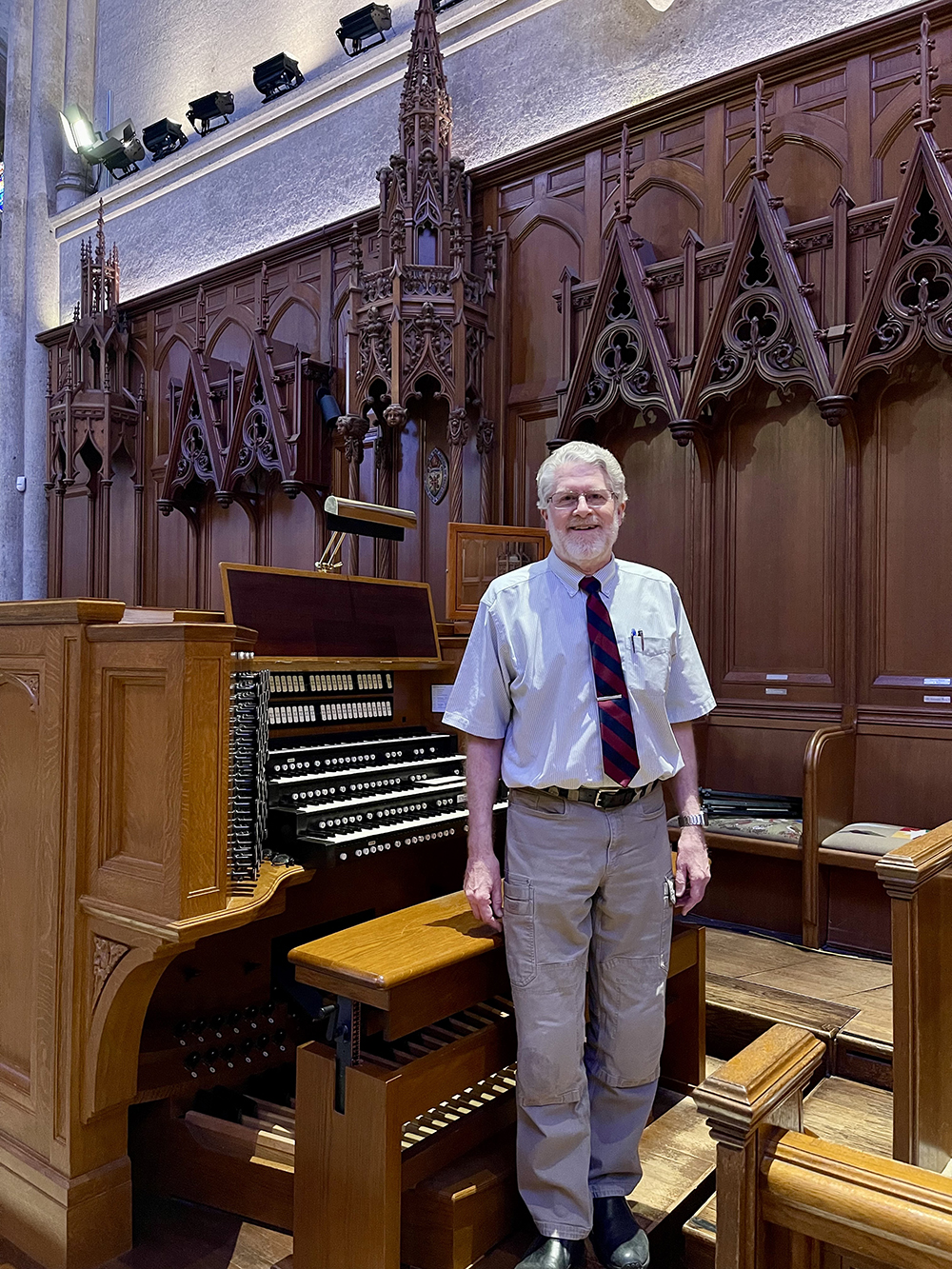
Louis Patterson has retired as President of Schoenstein & Co. after 25 years of service. He leaves a legacy of technical advancement and musical knowledge to the team he trained and the clients he served. Patterson also developed Schoenstein’s unique approach for tuning organs and personally supervised the care of the San Francisco Bay Area’s finest instruments. His career included work in church music and more than fifty years in organ building.
Robert D. Rhoads 1935-2024
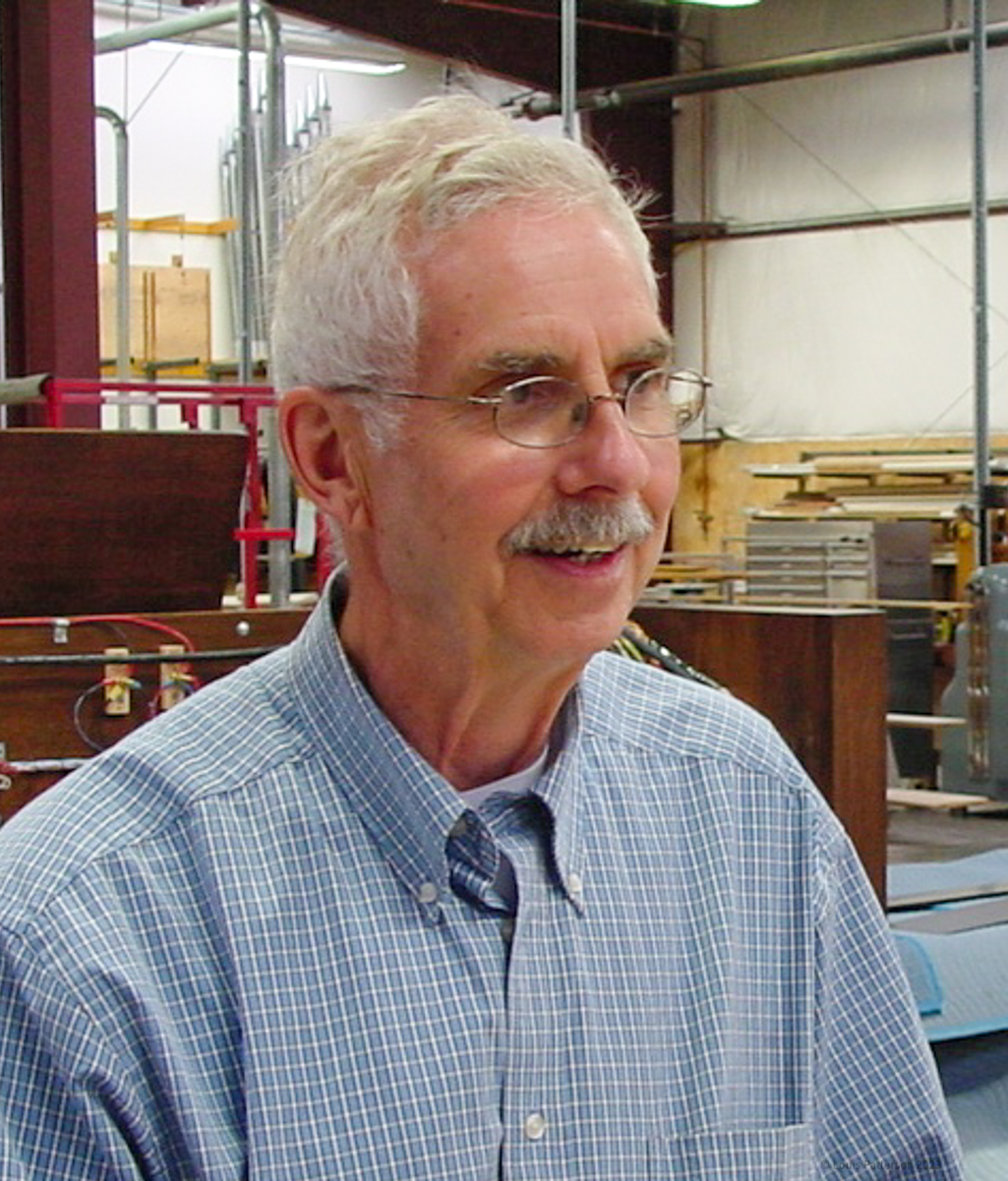
Robert D. Rhoads, retired Vice President and Technical Director of Schoenstein & Co., died at the age of 88 on February 10, 2024, at his Sonoma, CA home. Born in Burbank, CA, his family moved to a farm in Sunnyside, WA where he first acquired his tenacious, “can-do” attitude. Bob attended Simpson College in Washington and assisted in re-locating the college to San Francisco. Part of that project was installing two campus pipe organs. In San Francisco, he earned an AA in electrical engineering from Cogswell College while working on installation and maintenance of industrial boilers.
In 1960, he started Robert D. Rhoads Pipe Organ Service. In 1961, he became an M.P. Möller representative, selling, installing, and servicing in the Northern California area. In 1970, he returned to Simpson College as head of maintenance and engineer of their radio station. When offered an opportunity to plan and install radio studio equipment and transmitters throughout the country, he became chief engineer of Family Radio, a national religious network.
After completing the radio broadcasting project in 1974, Bob again entered the organ business. He purchased a building and set up an organ shop, employing two full-time people besides his wife, Dolores. During the “Pizza Organ” craze, they renovated and installed many Wurlitzer organs.
In 1978, Rhoads Pipe Organ Service was purchased by Schoenstein & Co. Bob became factory manager and Dolores, manager of tuning service. Bob was responsible for developing and refining the designs of nearly every component of the Schoenstein electric-pneumatic action system. He coordinated the engineering, production, and installation of all new organs as well as major re-building jobs. Some of Bob’s most notable projects at Schoenstein were organs at St. Paul’s Parish in Washington, D.C. and First-Plymouth Congregational Church in Lincoln, Nebraska. He also supervised the restoration of the Mormon Tabernacle organ in Salt Lake City and accomplished the nearly impossible feat of installing the façade of The Church of Jesus Christ of Latter-day Saints Conference Center in Salt Lake City while the building was still under construction.
In 1996, Bob was named Vice President and Technical Director. Company president, Jack Bethards, commented, “A major share of the credit for whatever success we’ve had in our second century goes to Bob who personally supervised our most challenging installations and spearheaded the development of many of our technical innovations. He is one of the most tenacious, single-minded “can-do” people I have ever known. Nothing stumps him. On top of his technical know-how is a sense of good taste in both visual and tonal design.”
In April of 2003, Bob retired after 24 years of service. He stayed busy enjoying several hobbies including a serious interest in audio systems, photography, and the architecture and furniture of the “craftsman” period. He is survived by Dolores, two children, and seven grandchildren.
Schoenstein Open House
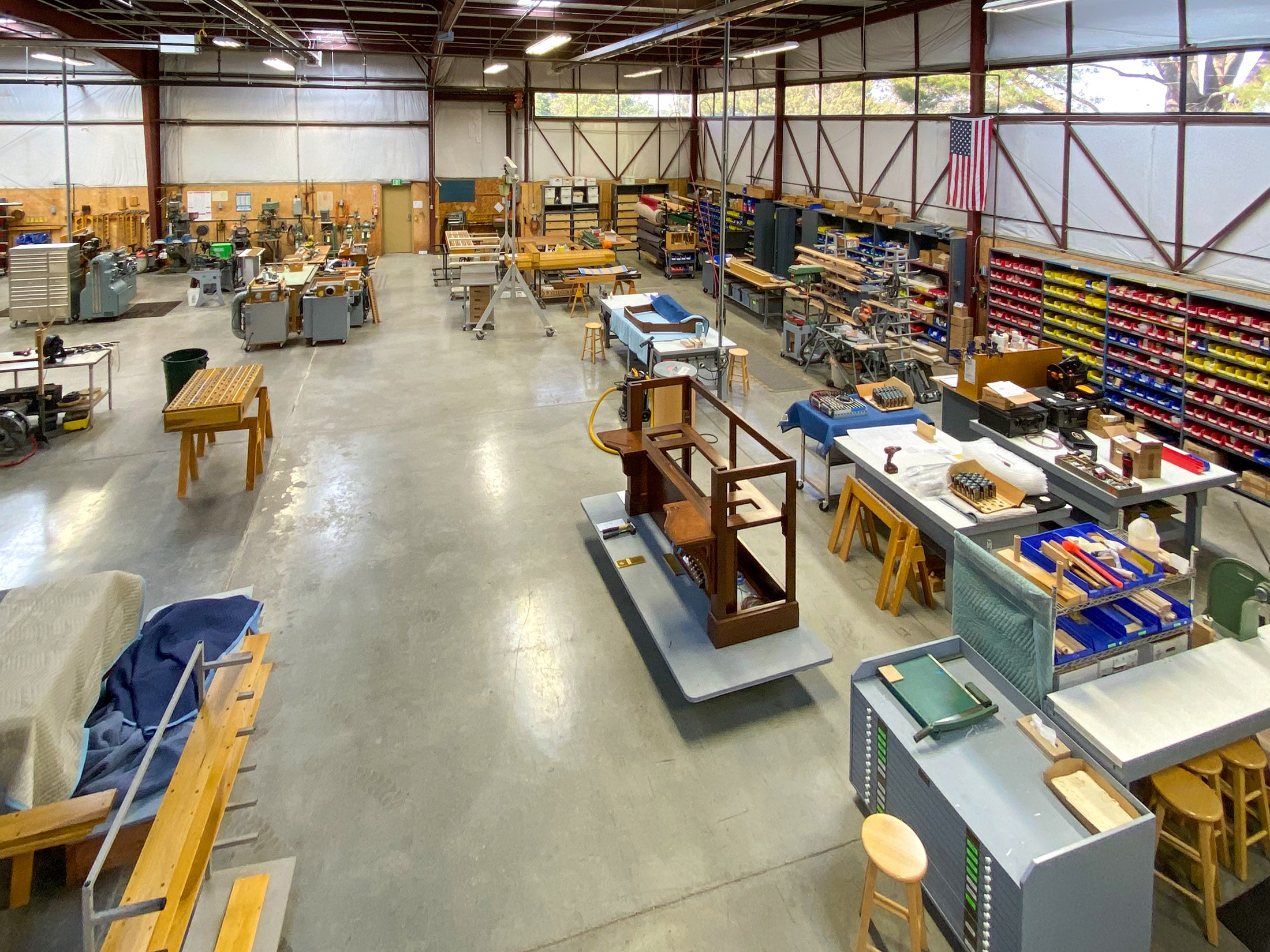
Benicia, CA – Please join us on Sunday, March 10, from 2-5 p.m. for an Open House at our Benicia plant. Guests will be able to see and hear our opus 185, a large organ for Corpus Christi, TX. There will be other projects on view throughout the plant.
As is our custom, guests will be able to visit our archives, where a recently-completed mural of Felix Schoenstein’s Orchestrion will be on display. The mural uses historic parts, located and refurbished by Edward and Vincent Schoenstein. Orchestrions were the impetus for founding our business, and we’re proud to have a life-sized representation in our facility.
Admission to the open house is free and open to the public; all are welcome. Light refreshments will be served. Schoenstein & Co. is located at 4001 Industrial Way, Benicia, CA 94510. Telephone (707) 747-5858. Ample parking is available.
Directions: From I-80: At Vallejo, take I-780 east towards Benicia. After East Fifth Street exit, move into right lane and exit onto I-680 North (Exit 7A). From I-680 (both directions): At Benicia, exit onto Lake Herman Road (Exit 61). Drive east (toward the water) on Lake Herman Road and cross the railroad overpass. Take the first right onto Industrial Way and drive 1.3 miles. The plant is on the right just past a curve – look for the 42-foot tall erecting room!
New Schoenstein to Corpus Christi, Texas
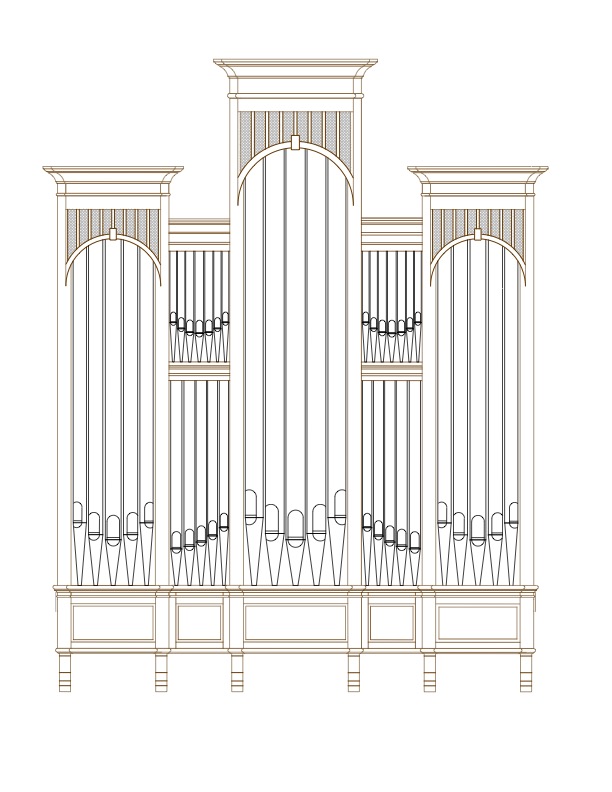
Schoenstein & Co. is building a three-manual, 46 rank organ for Church of the Good Shepherd in Corpus Christi, Texas. Built in 1950, the Spanish mission-revival building seats about 500 and offers a warm, balanced acoustic for voice and organ. The large Episcopal parish and renowned day school use the church every day for services, school events, and musical performances. The new organ, opus 185, will consist of a four-division chancel organ and an enclosed antiphonal organ in the rear gallery. The Swell includes double enclosure for the chorus reeds (32’, 16’, 8’, 4’) and mixture.
Church of the Good Shepherd’s previous organ was designed by the respected and talented James B. Jamison. Unfortunately, subsequent alterations obscured Jamison’s tonal concept beyond recognition. Rector Milton Black, organist Mi Ou Lee, and consultant Ken Cowan have each been instrumental in turning the church’s need for a new organ into a realized project. We hope that this new organ will once again give the church an instrument that is beautiful and useful. And with the many people – of all ages – who hear the organ each day, both these tenets will be put to the test from day one.
Schoenstein Leadership
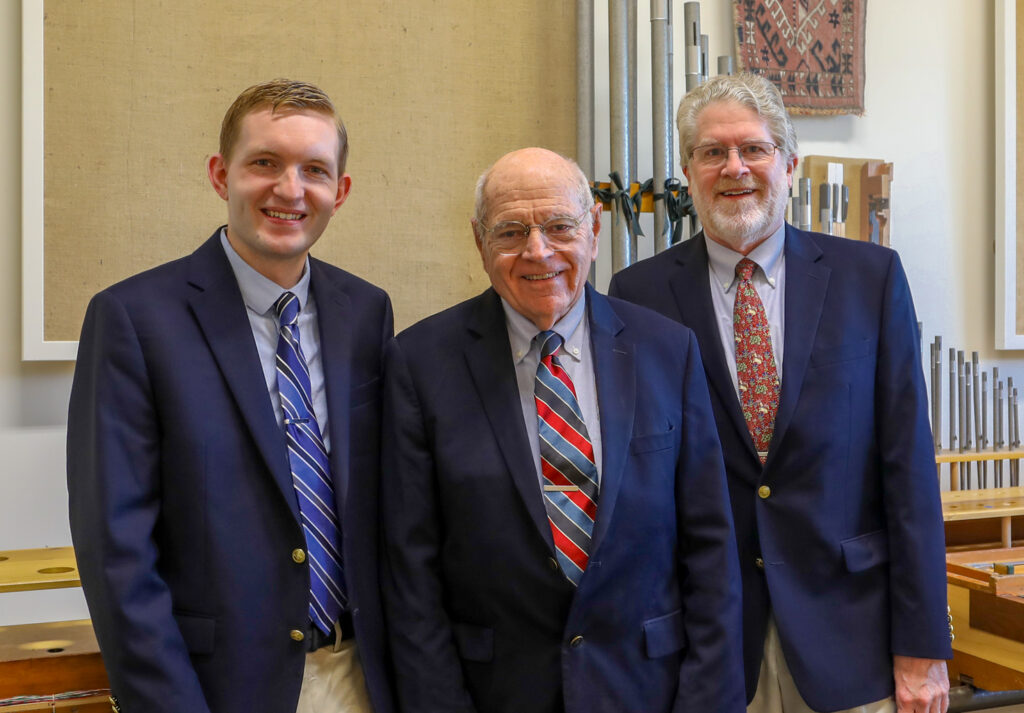 Celebrating its 146th anniversary, Schoenstein & Co. owner Jack Bethards announced a leadership plan to assure the firm’s future. He will assume the role of Chairman and Tonal Advisor. Vice President Louis Patterson becomes President, managing all aspects of the company. Bryan Dunnewald is named Tonal Director, working with Bethards to continue and execute the company’s musical vision. Erik Asprey becomes Director of Planning and Engineering, seeing all projects through from design to completion. Head Voicer Timothy Fink takes on the additional role of Technical Director, working with Asprey on the layout and mechanics of each instrument. Chris Hansford becomes Director of Operations, responsible for smooth and efficient workflow inside and outside the factory. This is the first step in the creation of an Employee Ownership Trust to ensure the long-term continuity of one of the world’s longest established organ building firms.
Celebrating its 146th anniversary, Schoenstein & Co. owner Jack Bethards announced a leadership plan to assure the firm’s future. He will assume the role of Chairman and Tonal Advisor. Vice President Louis Patterson becomes President, managing all aspects of the company. Bryan Dunnewald is named Tonal Director, working with Bethards to continue and execute the company’s musical vision. Erik Asprey becomes Director of Planning and Engineering, seeing all projects through from design to completion. Head Voicer Timothy Fink takes on the additional role of Technical Director, working with Asprey on the layout and mechanics of each instrument. Chris Hansford becomes Director of Operations, responsible for smooth and efficient workflow inside and outside the factory. This is the first step in the creation of an Employee Ownership Trust to ensure the long-term continuity of one of the world’s longest established organ building firms.
Caring for a Treasure
It is always an honor to rebuild an historic instrument from a celebrated firm. The story of this Estey organ involves passionate advocates and smart designers. The result is an organ that has been providing a great musical benefit to the church for nearly a century.
Estey opus 2886 was installed at the Seventh Avenue Presbyterian Church in San Francisco in 1930 by Felix F. Schoenstein & Sons. Strapped by financial woes of the Great Depression, the church had limited resources and struggled to pay for what little organ they could buy. They needed only the most practical instrument, leaving no room for any specialty stops. They needed an organ which is beautiful and useful.
James B. Jamison, then-sales representative for Estey, devised a stop list focusing on 8’ tone and power through reeds. The voices and scales were chosen carefully to create ensembles that stand on their own. Jamison speaks to the success of these choices in a letter to his colleagues at Estey. He says that when drawing the diapasons alone with Cornopean coupled at 16-8-4, “…you get an effect that should cost $10,000…. It really is exceptional.” In addition to the carefully-chosen voices, the organ is entirely enclosed for maximum versatility.
After Jamison finished the organ, letters show the church loved its beautiful tone from the first hearing. That love continues to the present day, and when Mary Morganti – a member of the congregation and professional archivist – heard the organ, she knew she wanted to help care for it. Her advocacy on its behalf, coupled with the steadfast support of longtime Lead Pastor Jeff Gaines and Director of Liturgical Music Luba Kravchenko, led to a restoration project for the aging organ to bring it back to top condition.
As part of her growing interest in Estey opus 2886, Morganti traveled to the Estey Museum in Battleboro, VT. There she met with the museum curators and even volunteered to go through company archives. The records she and others at the museum uncovered were valuable to us in our restoration efforts; they also shed light on Jamison’s particular interest in this job. After the church had raised the funds, they engaged us to restore the organ, a chance for us to connect with our heritage and breathe new life into an organ we installed nearly 100 years ago.
The whole organ was removed to our Benicia plant while the chambers were cleaned, painted, and modified for easier tuning access. In the course of the restoration, we improved some design elements that had severely limited technician access in the chamber. We also remedied mechanical and tonal issues that had arisen over decades of playing. Re-installed, the organ is easier to maintain and therefore in better tune.
Upon returning the organ to its chambers, we were struck by the beauty and practicality of this little instrument. From the incisive, magical Salicional to the “$10,000” Cornopean, the organ is full of color that is useful to the church. Of special note is the 16’ Dulciana, a perfect example of a gentle string that speaks promptly and beautifully across its whole compass. In short, this organ is designed practically and voiced beautifully. It was our pleasure to help the organ sing again, and we are confident the people of Seventh Avenue will treasure opus 2886 for another 100 years to come.
Bryan Dunnewald
Schoenstein & Co.
Legion of Honor English Horn Receives a Tune Up
The famous 1924 Skinner organ at The Legion of Honor is a rare example of an organ built for a museum that is played weekly. It’s our honor to care for this beautiful instrument. We often undertake small projects to keep the organ at its full potential. One such project was the restoration of the Solo English Horn, a unique stop that was in development at the time of the organ’s construction.
Our Vice President, Louis Patterson, led the restoration which included a comprehensive cleaning and repairing of all pipes. Scrolls and pipe damage was repaired, reeds and motors cleaned and re-assembled, and all pipes were regulated at our Benicia plant. The English Horn will now be installed at the Legion and regulated by our service team. It is our hope that these restorative efforts will give this beautiful stop another 98 years of life. We look forward to continuing to see to the long-term health of the Legion organ.